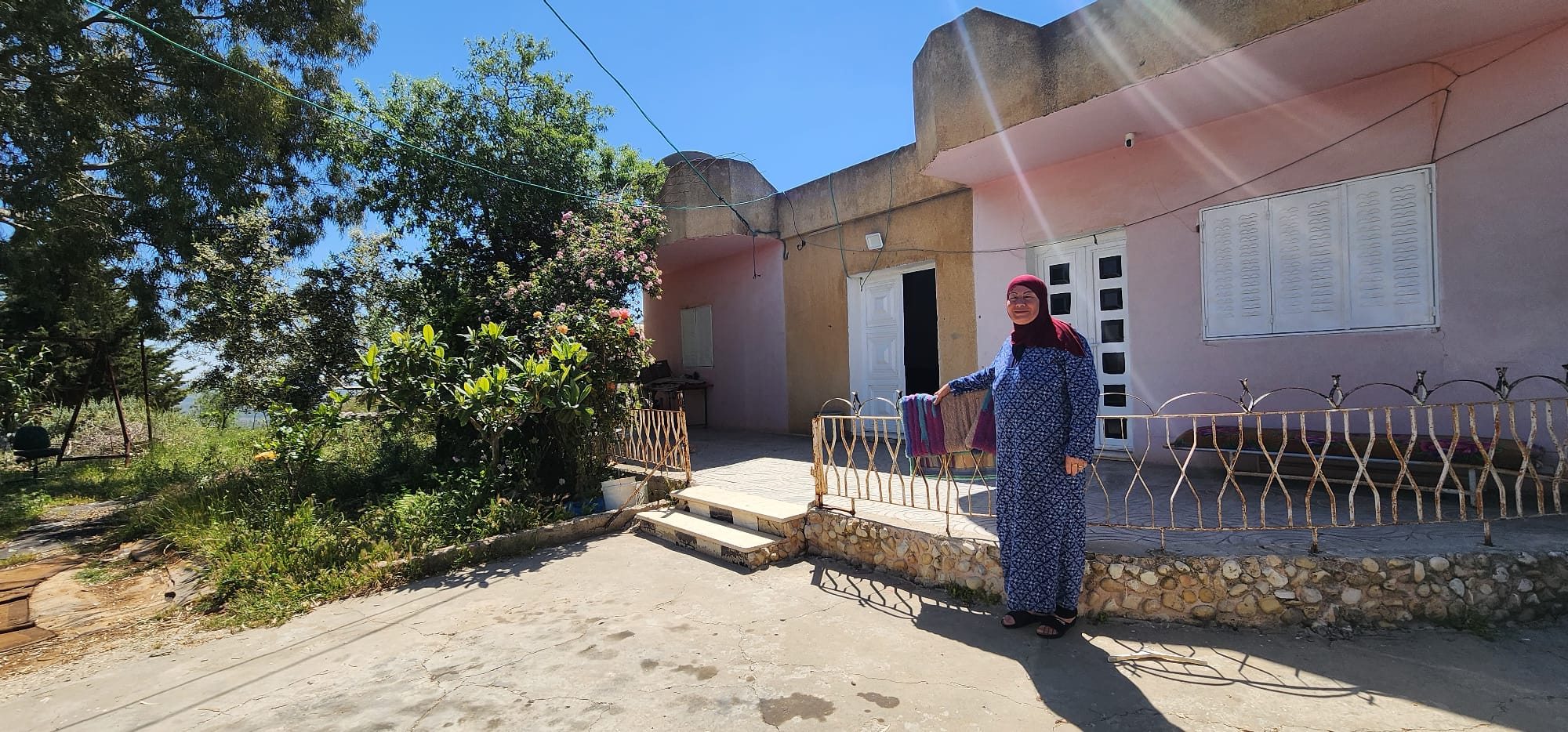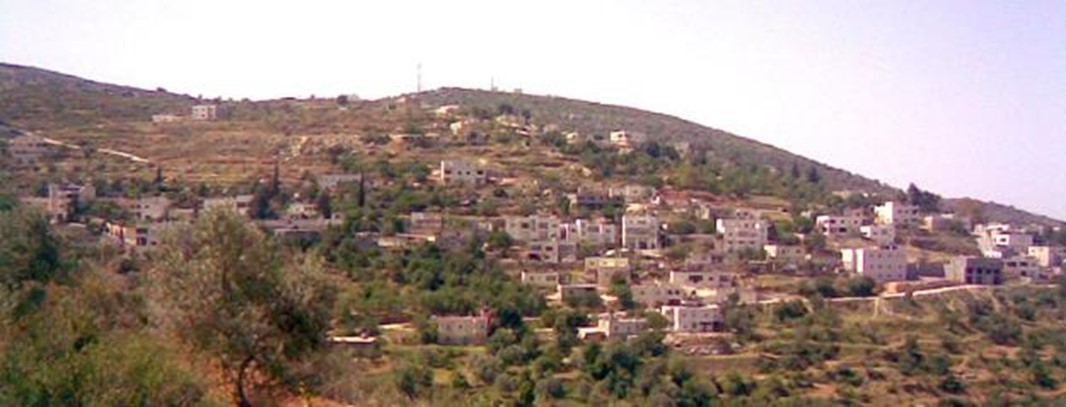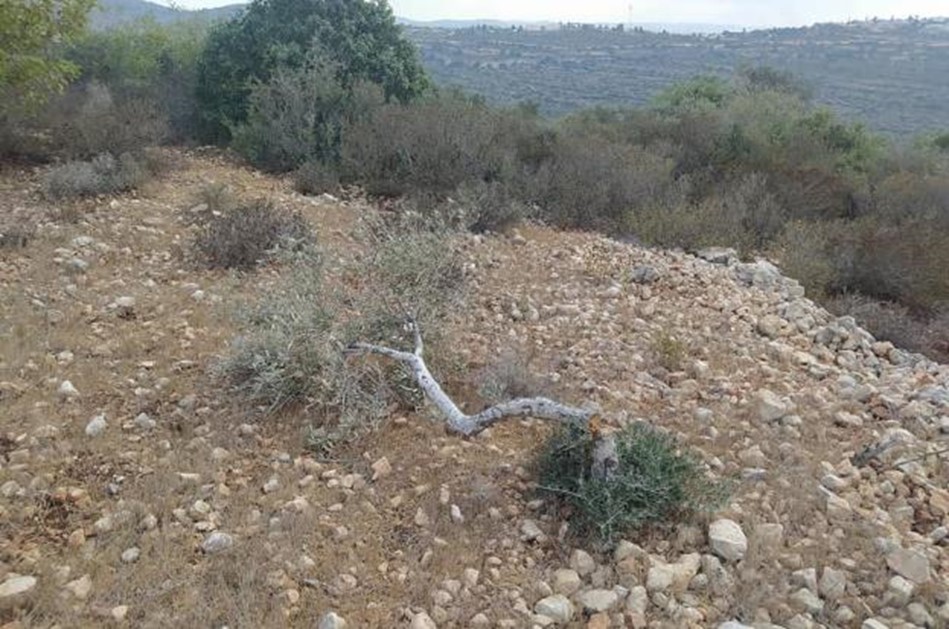Determined to stay: Umm Saleh’s unyielding stand amid settler aggression
In the outskirts of Al Mazra’a Al Qibliya, nestled in the hills of the central West Bank, Umm Saleh explains her family’s everyday fear of Israeli settlers. “They are not leaving us alone,” she says. “A few days ago, we found them sitting on the swing in our outdoor patio, and they threatened to kill us.”
In one of those incidents, on 22 July 2023, Umm Saleh’s son was injured along with other Palestinians. It happened after Israeli settlers threw stones at their house and vehicles. When neighbours gathered to protest the attack, with some throwing stones to force the trespassers away, Israeli forces intervened by shooting rubber bullets and teargas canisters, resulting in injuries among villagers.
Umm Saleh’s story is not an isolated case. It is a microcosm of a larger issue driving humanitarian and human rights concerns.

Over the years, Israeli settlements have been established right next to this Palestinian village, even encroaching upon privately-owned land and a natural spring. Consequently, the available space for the villagers has steadily diminished, and incidents of violence or aggression have become commonplace.
On 20 December 2022, Israeli settlers entered a public park in the village, where they physically assaulted children with sticks. Overall, since 2022, OCHA has documented 16 incidents involving people known or believed to be Israeli settlers undermining the safety or livelihoods of Palestinian families from Al Mazra’a Al Qibliya. Fruit trees have been cut, uprooted, or otherwise damaged, walls and metal fences have been destroyed, and farmers have been harassed or attacked.

Across the West Bank, the built-up areas of about 250 Israeli settlements, all illegal under international humanitarian law, occupy about 3 per cent of the land. However, their municipal boundaries extend far beyond that, encompassing nearly 10 per cent of the land, which are largely off limits for Palestinians, even for those who own land within those boundaries. Settlements are spread throughout the territory, leaving almost no Palestinian areas unaffected by their presence.
Settlers in this area are often armed, Umm Saleh tells us.
Acts of violence or harassment carried out by settlers generate fear among Palestinians accessing their lands. In 2022, the United Nations Office for the Coordination of Humanitarian Affairs (OCHA) documented 856 settler-related incidents throughout the occupied Palestinian territory, marking the highest yearly toll on record. In 2023, a total of 593 such incidents were recorded in the first six months alone, indicating an ongoing and alarming upward trend. These statistics, however, only account for incidents involving casualties or property damage. The broader scope of this issue, which encompasses harassment and trespass, like those experienced by Umm Saleh and her family, results in persistent fear and psychological trauma, which often goes unnoticed.
Residents of Al Mazra’a al Qibliya have regularly protested settlement activities, but this in itself has had an impact on their safety and wellbeing. Since 2018, OCHA has recorded three Palestinian fatalities in the village, including most recently a 17-year-old boy, who was shot in the abdomen in October 2022. All of them were killed by Israeli forces, with live ammunition, during such demonstrations and related confrontations. Many others have been injured.
Land takeover, coupled with the difficulty for people to safely access workplaces and essential services, is detrimental to the communities’ livelihoods . This situation creates an urgent need for protection, psychosocial support, and other critical humanitarian responses.

Settler violence does not happen in isolation. It is one of multiple occupation-related practices that, combined, shape a coercive environment. Such practices include home demolitions, search-and-arrest operations, and movement restrictions, among others. They exert pressure on Palestinians to leave their homes and communities, putting them at risk of forcible transfer.

Another Palestinian house, on the hilltop overlooking Shreteh’s home, has been abandoned, but it no longer stands empty. Settlers have taken over it. A lawyer is trying to help the owners reclaim their property. So far, to no avail.
A recent case in Ein Samiya, 20 kilometres to the east of Al Mazra’a, also serves a reminder of this threat. There, the whole community of 178 people dismantled and left their homes in May 2023, citing settler violence as the main reason. In the adjacent Wadi as Seek community, four households – 11 adults and 16 children – left in February 2023, following the establishment of an Israeli settlement nearby, moving to another location. We do not plan to return, they told us.
So far, the Shreteh family has remained despite an immense pressure on them to move out. “We don’t want to leave,” Umm Saleh Shreteh tells us, “but they’re making our life unbearable.”
Mohammad, Umm Saleh’s husband, finds himself forced to stay home most of the time, in the hope that his presence will be a shield against the harassment of the settlers. This situation has caused severe financial strain for the family, as Mohammad’s ability to work has been greatly hindered. Clearly, survival is not merely about securing one’s home, but also about maintaining livelihoods amid harsh circumstances. This represents a deep humanitarian concern, as families like the Shretehs not only face the risk of displacement but also the looming threat of economic instability.

The humanitarian community is doing its part to support such families, with some partners extending legal support, emergency aid or protective presence. However, our efforts are often hampered by limited funding and constraints that impede the provision of protection under military occupation. As our partners continue to offer support, the root causes of this crisis are yet to be addressed.
Umm Saleh’s story shows how Palestinians continue to endure relentless hardship, threats and fear.










